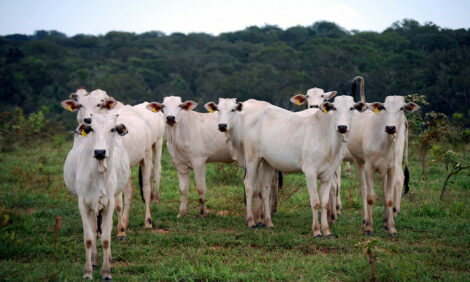



Dairy farmers told to focus on integration, export growth and benchmarking
Productivity in the dairy industry is not about producing as much milk as possible it is about how well the sector can turn inputs into outputs, delegates at RABDF’s Virtual Business and Policy Conference were told.In the UK there are some excellent examples of productive farms, but there are also examples of where farmers can do better, said Tim Mordan, Deputy Director at Defra.
Speaking during the hour-long session on 2 November, which focussed on "increasing productivity, efficiency, and strategies for the future of the dairy industry", Mr Mordan outlined how benchmarking and using data intelligently will be critical to improving productivity.

Currently in the UK only about 25-35 percent of farmers are benchmarking compared to 50 percent of Dutch farmers.
He said: “There are some farmers living and breathing data, but we want to get more producers doing this routinely.”
To help farmers boost productivity he announced that from next year there would be a series of more streamlined, coherent, and easy to access grants available. This will include a small grant scheme offering funds up to £25,000 for small bits of kit as well as a bigger grant scheme from larger infrastructure projects. Unlike EU grants, contractors will also be eligible for the scheme.
Also speaking during the Monday morning session sponsored by Lely, Barclays, and ForFarmers, AHDB Chair Nicolas Saphir explained how dairy innovation was critical to keep the UK market competitive.
He added: “We lag behind in dairy innovation and must look at the quality of new product development. We should be looking at moving from a supply-based industry to a market-based industry. And we should not be importing the number one butter brand into the UK, we should be making it,” he added.
Mr Saphir outlined how Germany was the No.1 cheese exporter and Ireland the No.2 when it comes to exporting butter into the USA.
He said: “We (UK dairy industry) have been driven down a route of liquid milk and we have been slow on product development and export. The possibility for exports is there, we have to drive exports.”
While Mr Saphir appreciated there was a lot that needed to be done, he said having aligned supply chains would be critical.
He added: “There is a lot to do to define which markets to go for, but we need better integration in the supply chain and getting the whole industry to understand productivity. We need to decide as an industry if we want to focus on liquid or look at product development and look outside the UK.
“The challenges are considerable, but we have a great opportunity in the future.”
Both speakers agreed knowledge sharing in the industry would be vital going forward for continuous improvement and development. This would be via farmer-led initiatives, discussion groups and strategic farms.


